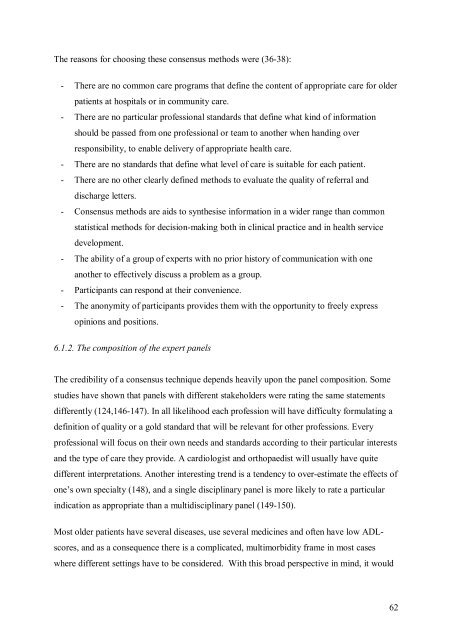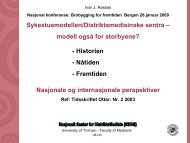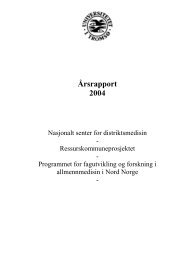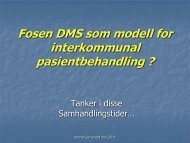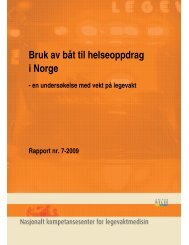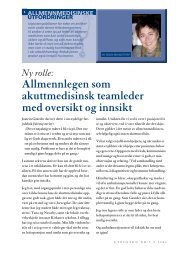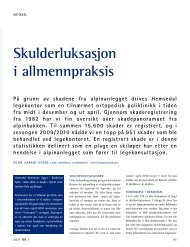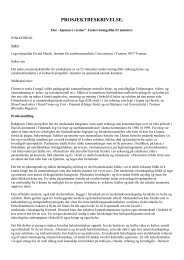Helge Garåsen The Trondheim Model - NSDM
Helge Garåsen The Trondheim Model - NSDM
Helge Garåsen The Trondheim Model - NSDM
Create successful ePaper yourself
Turn your PDF publications into a flip-book with our unique Google optimized e-Paper software.
<strong>The</strong> reasons for choosing these consensus methods were (36-38):<br />
- <strong>The</strong>re are no common care programs that define the content of appropriate care for older<br />
patients at hospitals or in community care.<br />
- <strong>The</strong>re are no particular professional standards that define what kind of information<br />
should be passed from one professional or team to another when handing over<br />
responsibility, to enable delivery of appropriate health care.<br />
- <strong>The</strong>re are no standards that define what level of care is suitable for each patient.<br />
- <strong>The</strong>re are no other clearly defined methods to evaluate the quality of referral and<br />
discharge letters.<br />
- Consensus methods are aids to synthesise information in a wider range than common<br />
statistical methods for decision-making both in clinical practice and in health service<br />
development.<br />
- <strong>The</strong> ability of a group of experts with no prior history of communication with one<br />
another to effectively discuss a problem as a group.<br />
- Participants can respond at their convenience.<br />
- <strong>The</strong> anonymity of participants provides them with the opportunity to freely express<br />
opinions and positions.<br />
6.1.2. <strong>The</strong> composition of the expert panels<br />
<strong>The</strong> credibility of a consensus technique depends heavily upon the panel composition. Some<br />
studies have shown that panels with different stakeholders were rating the same statements<br />
differently (124,146-147). In all likelihood each profession will have difficulty formulating a<br />
definition of quality or a gold standard that will be relevant for other professions. Every<br />
professional will focus on their own needs and standards according to their particular interests<br />
and the type of care they provide. A cardiologist and orthopaedist will usually have quite<br />
different interpretations. Another interesting trend is a tendency to over-estimate the effects of<br />
one’s own specialty (148), and a single disciplinary panel is more likely to rate a particular<br />
indication as appropriate than a multidisciplinary panel (149-150).<br />
Most older patients have several diseases, use several medicines and often have low ADLscores,<br />
and as a consequence there is a complicated, multimorbidity frame in most cases<br />
where different settings have to be considered. With this broad perspective in mind, it would<br />
62


